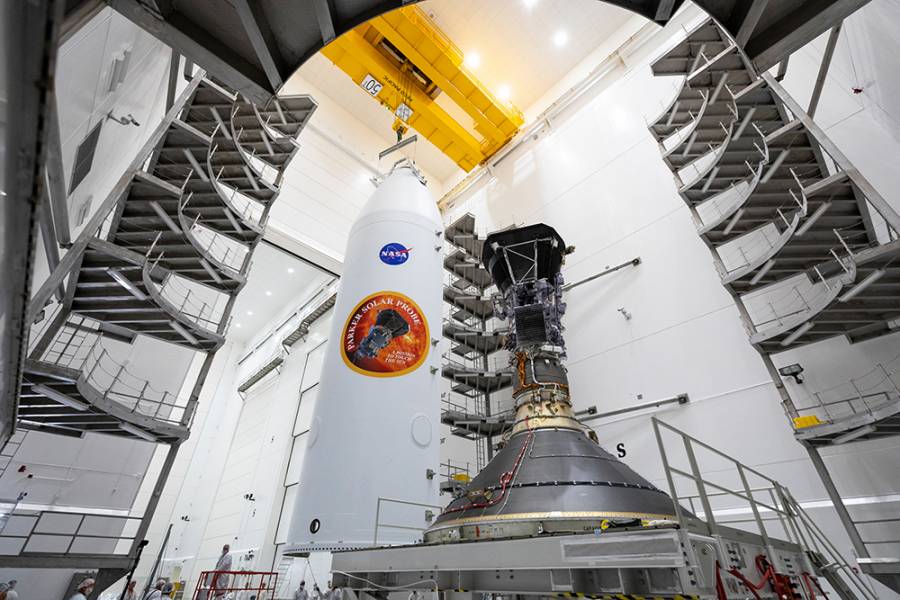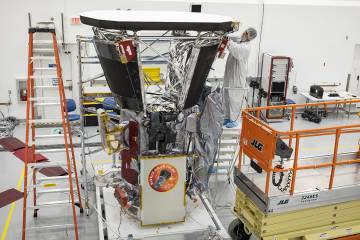- Name
- Geoff Brown
- Geoffrey.Brown@jhuapl.edu
- Office phone
- 240-228-5618
It's a mission 60 years in the making, and now the Parker Solar Probe is making its way to the launchpad where it will lift off and begin its historic journey to the sun.

Image caption: Seen here inside half of its 62.7-foot fairing, NASA’s Parker Solar Probe was encapsulated in July in preparation for the move from Astrotech Space Operations in Titusville, Florida, to Space Launch Complex 37 on Cape Canaveral Air Force Station.
Image credit: NASA / Johns Hopkins APL / Ed Whitman
The little birdie is preparing to leave the nest.
Designed, built, and managed for NASA by the Johns Hopkins Applied Physics Lab, the spacecraft will travel to the sun's atmosphere, commonly called the corona, to study phenomena relating to solar winds, including energy flow and magnetic fields. With a revolutionary heat shield designed by scientists at the Johns Hopkins Whiting School of Engineering, the probe will travel within 3.83 million miles of the sun's surface.
Now that it's been cleared for launch, the probe will be integrated onto its launch vehicle, the Delta IV Heavy, which is the largest launch vehicle in operation. Safely secured inside its 62.7-foot fairing, the spacecraft has already been mated to the third-stage rocket motor, a Star 48BV from Northrop Grumman, that will get it to the sun (a journey that takes 55 times more energy than reaching Mars).
The current launch window estimate is Aug. 11 at 3:33 a.m. As countdown creeps closer, stay tuned to the Hub for updates and information.
Posted in Science+Technology
Tagged applied physics laboratory, nasa, outer space, parker solar probe











